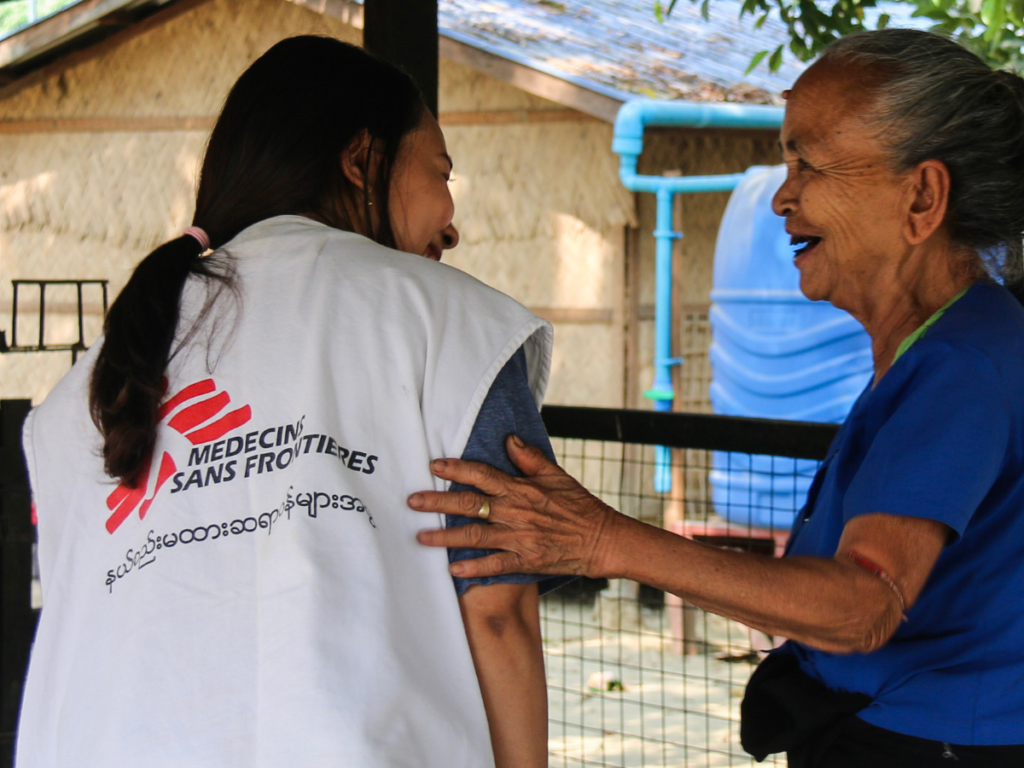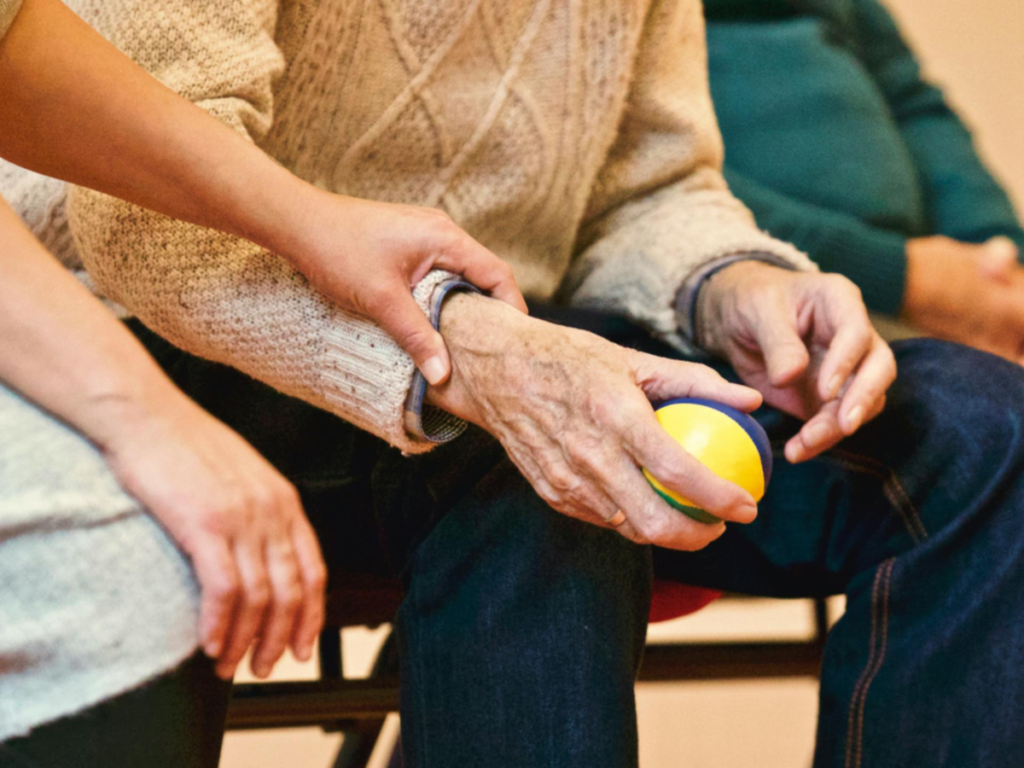According to the World Health Organization (WHO), approximately 260 million individuals in Southeast Asia, which is about one in seven people, are affected by a mental health issue. Unfortunately, many of them are not getting the help they need. Thus, ASEAN continues to mainstream mental health and mental healthcare to address this alarming problem that concerns many of its citizens.
In the ASEAN Post 2015 Health Development Agenda spanning from 2016 to 2020, mental health emerges as a key focus area. This aligns with the objectives of the ASEAN Socio-Cultural Community Blueprint 2025, which aims to foster and promote healthy, caring, sustainable, and productive communities by prioritizing healthy lifestyle, resilience against health risks, and ensuring equitable healthcare access for all.
Outlined in the ASEAN Mental Health Systems Report is the situation of mental health in ASEAN Member States (AMS), providing information on the progress that has been made by each member country in integrating mental health into its national healthcare system. Although there have been developments, there are still challenges that each ASM faces and areas to improve on. Nevertheless, ASEAN is determined to better the quality of mental healthcare in Southeast Asia to nurture its citizens, especially the youth.
To provide a general background, the following is provides the current status of the mental health and mental health care in each AMS:
Brunei Darussalam
In recent years, Brunei has witnessed an escalating burden of mental health issues. Depression and anxiety disorders emerge as the prevailing mental illnesses in the country, while reports of suicide have shown an alarming uptick, doubling from an average of five cases between 2010 and 2015 to approximately 10 cases between 2016 and 2020.
About 7000 individuals, roughly 1.5 percent of the population, receive treatment for mental health conditions, with the Psychiatry Department at Raja Isteri Pengiran Anak Saleha Hospital (RIPAS) handling the cases. Adult Psychiatry Services attend to around 40 new cases and 600 follow-ups monthly, while Child and Adolescent Psychiatry Services manage 10 new cases and 500 follow-ups monthly. Similarly, Psychology Services have observed a surge in cases, currently handling 400 to 600 each month. These figures, predating the COVID-19 pandemic, are expected to escalate further in its aftermath. Moreover, calls to the national mental health hotline, Talian Harapan 145, spiked by 8 percent during the pandemic’s second phase, revealing the exacerbated mental health challenges faced by the population.
To combat the growing mental health concern in the country, Brunei is implementing the Multi-Sectoral Brunei Darussalam Mental Health Action Plan 2022-2025 with the hopes to enhance mental health services across various sectors.
Cambodia

The Ministry of Health Cambodia and WHO found that about 11 percent of adults in Cambodia are dealing with common mental health problems like depression and anxiety. In connection, the country’s mental health system is struggling due to limited resources such as a shortage of professionals, facilities, and funding. Thus, there are only a few places for people to get help, and not enough specialists to provide care.
Moreover, stigma and discrimination against those with mental health issues are still widespread in Cambodian society, making it hard for people to seek help without facing judgment or isolation.
To make mental health care more accessible and less stigmatized, efforts are being made to include mental health services in regular health care settings. This means training doctors and nurses to recognize and treat mental health problems, and providing support within local communities.
Indonesia
Despite some advancements, including the enactment of the Mental Health Act and the introduction of Universal Health Coverage in 2014, Indonesia’s mental health system is widely perceived as underdeveloped compared to its regional counterparts. This perspective is underscored by several factors, including limited government funding, a shortage of mental health professionals, and a significant treatment gap. The nation’s health expenditure, representing a mere 2.8 percent of the GDP before the onset of the COVID-19 pandemic, is among the lowest in the region, with a disproportionately small allocation for mental health services.
Evidence from national health surveys reveals alarming treatment gaps, particularly for conditions like depression, where only 9 percent of patients receive evidence-based care. Even for disorders like schizophrenia, where treatment rates are comparatively higher, a substantial portion of affected individuals remain untreated or lack continuous care. Compounding these challenges is the persistent practice of confinement and re-shackling of individuals with mental disorders, highlighting serious human rights concerns. Misinformation and stigma surrounding mental health further exacerbate the situation, with many patients being stigmatized and deprived of appropriate care due to societal misconceptions and a lack of accessible mental health services.
Laos
Over the past decade, Lao PDR has witnessed significant improvements in health outcomes, yet progress in mental health remains limited. An estimated 210,000 individuals in the country grapple with mental, neurological, or substance use disorders, with depression and anxiety being prevalent.
Alarmingly, over 95 percent of those with serious mental illnesses receive no treatment, and access to mental health facilities is disproportionately scarce in rural areas, where 75 percent of the population resides. With only 42 mental health personnel serving a population of 7 million, and a meager 0.3 percent of the total health budget allocated to mental health staffing, the disparities in mental health care provision are stark.
Nonetheless, WHO is assisting the Cambodian government in providing sustainable mental health services at the primary healthcare level and in adopting tools, guidelines, and recommendations for mental health and psychosocial support.
Malaysia
A survey conducted by the 2015 National Health and Morbidity Survey (NHMS) revealed alarming statistics regarding mental health in Malaysia, which found that a staggering 29 percent of Malaysian adults grappled with mental health disorders. Subsequent data from the 2019 NHMS painted a similar concern, with 2.3 percent of the population reported to be suffering from depression.
Nonetheless, there have been substantial revisions to mental health legislation, shifting from custodial to community-based care, and fostering research and organizational enhancements to enhance mental health service provision.
Myanmar

There is a lack of national-level data on the prevalence of mental disorders and the treatment gap in Myanmar. Nevertheless, common mental health disorders such as anxiety, depression, psychosis, alcohol use, developmental disorders and epilepsy are included in some reports.
Unfortunately, mental health lacks prioritization amid various crises as families focus on survival. Prolonged conflicts, recent political turmoil, and the ongoing challenges of the COVID-19 pandemic have greatly affected the mental well-being of citizens.
The Philippines
In the Philippines, the occurrence of mental disorders varied from 11.3 percent to 11.6 percent, showing a yearly rise of 2 percent. This led to an increase from 7.0 to 12.5 million Filipinos diagnosed with mental disorders from 1990 to 2019. Anxiety and depression are the most common conditions. Addressing these issues, WHO proposed a strategic plan including heightened political attention and funding, establishing a sustainable care model, and fostering collaborative efforts for tailored solutions.
The passing of the Philippine Mental Health Act in 2018 marked progress towards establishing a comprehensive mental health structure. Historically, mental health funding was minimal, constituting merely 5 percent of the healthcare budget. However, recent advancements show promise, such as the significant rise in government funding for mental health from 57 million to 1 billion between 2022 and 2023. Additionally, The Philippines is experimenting with a mental health package for outpatient care.
Singapore

A survey by the Ministry of Health (MOH) in Singapore, part of the National Population Health Survey 2022, indicates a deterioration in mental health among residents aged 18 to 74. Results revealed an increase in poor mental health prevalence from 13.4 percent in 2020 to 17 percent in 2022, with younger adults aged 18 to 29 exhibiting the highest proportion at 25.3 percent. Other age groups showed lower prevalence rates, ranging from 10.5 percent among those aged 60 to 74 to 19.4 percent among those aged 30 to 39. Additionally, the survey noted a higher prevalence of poor mental health among females, with 18.6 percent, compared to males, with 15.2 percent.
Nevertheless, the Health Promotion Board (HPB) spearheads nationwide initiatives aimed at promoting mental health and preventing mental illness across the population. These endeavors are guided by several objectives: (1) To enhance awareness and appreciation of mental well-being; (2) To equip individuals with the knowledge and skills necessary to fortify their personal mental health; (3) To foster understanding of mental health issues and prompt early intervention, and; (4) To combat discrimination against those experiencing mental health challenges. HPB tailors its mental health programs to cater to diverse demographic groups, addressing their specific psycho-emotional needs.
Thailand
Between 2015 and 2021, the count of individuals in Thailand grappling with mental health issues surged from 1.3 million to 2.3 million. In connection, the number of suicide incidences also increased.
To combat the alarming figures, the Mental Health Department (MHD), as the main authority for mental health nationally, advises the government on policies and laws, establishes care standards, and shares mental health advancements with stakeholders. Mental health services are part of overall healthcare and are structured by service areas. Additionally, since the 2012 health reform, MHD’s responsibilities also encompass policy development and overseeing mental health services at local levels.
Vietnam
In Vietnam, data from the National Mental Hospital indicated that in 2014, the prevalence of 10 common mental disorders was 14.2 percent, with depressive disorders accounting for 2.45 percent of cases. The suicide rate in 2015 was reported at 5.87 per 100,000 population. Presently, WHO Vietnam is assisting the government in establishing a framework to integrate mental health into primary healthcare within the general health system.
While Vietnam hasn’t established a specific mental health law, various general health and related regulations are pertinent to mental health governance and services. Efforts to draft a mental health law have been ongoing, supported by advocacy groups and working committees. Despite the absence of a dedicated law, numerous policies directly addressing or relevant to mental health have been introduced. Notably, the Mental Health Protection for Community and Children Project, initiated in 1998 as part of the National Target Programs on Health, serves as a significant national mental health policy.
With all things considered, it is undeniable that Southeast Asia has a complex mental health and mental health care landscape. Since the problem of mental health has only been around recently, mental health and mental health care have not become a high priority in most Southeast Asian countries; juxtapose this to the festive and vibrant facade of the region, there is indeed a dire need to discuss and talk about this issue. Moreover, to address mental health concerns in AMS, experts present the following recommendations:
Uphold Mental Health as a Fundamental Right

Recognize and affirm mental health as an essential aspect of overall wellbeing, and ensure that all individuals have access to quality mental health care without discrimination or stigma. This includes implementing policies and laws that protect the rights of individuals with mental health conditions, such as anti-discrimination legislation and measures to ensure equal access to mental health services. It also involves integrating mental health into broader health and social policies, recognizing the interconnectedness of mental health with physical health, education, employment, housing, and social support systems.
Additionally, promoting mental health literacy and awareness in communities is crucial to fostering understanding, acceptance, and support for individuals facing mental health challenges.
Increase Manpower in Mental Health Care

Addressing the shortage of mental health professionals is essential to meet the growing demand for mental health services in Southeast Asia. This involves increasing the number of psychiatrists, psychologists, psychiatric nurses, and other mental health professionals through targeted recruitment efforts, expanded training programs, and improved retention strategies.
Additionally, incentivizing mental health professionals to work in underserved areas, such as rural communities, is crucial to ensure equitable access to care across the region. Collaborative efforts between governments, educational institutions, and healthcare organizations are needed to implement effective workforce development strategies and strengthen the mental health workforce in Southeast Asia.
Moreover, fostering partnerships with international organizations and leveraging telehealth technologies can help overcome geographical barriers and enhance access to mental health services in remote areas. Ultimately, investing in manpower expansion is essential to build a sustainable and resilient mental health care system that can effectively meet the diverse needs of the population in the region.
Disseminate Information to Reduce Stigma

Combating the stigma surrounding mental health in Southeast Asia requires comprehensive efforts to educate and inform the public about mental health. This includes implementing widespread awareness campaigns using various media platforms, such as television, radio, social media, and community events, to reach diverse populations. These campaigns should focus on dispelling myths and misconceptions about mental illness, promoting understanding and empathy towards individuals with mental health conditions, and encouraging open dialogue about mental health issues
In addition, incorporating mental health education into school curricula and workplace training programs can help foster a culture of acceptance and support. Engaging with religious and community leaders as well as local influencers can also play a crucial role in challenging stigma and promoting positive attitudes towards mental health.
Furthermore, providing accurate information about available mental health services and resources is essential to empower individuals to seek help without fear of judgment or discrimination. By disseminating information effectively, stigma reduction efforts can contribute to creating a more inclusive and supportive environment for individuals living with mental illness in Southeast Asia.

If you or anyone you know suffers from mental health difficulties, reach out and seek professional health. You can contact your local mental health hotline, personal healthcare provider, mental health professional such as psychologist, psychiatrist, and counselor, community mental health clinic or center, and online mental health support group or counseling service.
Remember, you are not alone. You don’t have to be alone.
References:
Alibudbud, R. (2023, October 8). Towards transforming the mental health services of the Philippines. The Lancet. https://www.thelancet.com/journals/lanwpc/article/PIIS2666-6065(23)00253-5/fulltext#:~:text=In%20the%20Philippines%2C%20the%20prevalence,disorder%20between%201990%20and%202019.&text=Underscoring%20the%20mental%20health%20agenda%20in%20the%20Philippines.
Cipta D.A. & Saputra, A. (2022, August 5). Changing landscape of mental health from early career psychiatrists’ perspective in Indonesia. JoGHNP. https://joghnp.scholasticahq.com/article/37413-changing-landscape-of-mental-health-from-early-career-psychiatrists-perspective-in-indonesia
Ganesan, N. (2023, September 27). Prevalence of poor mental health increasing in Singapore; young adults have highest proportion at 25.3%. Channel News Asia. https://www.channelnewsasia.com/singapore/poor-mental-health-young-adults-seek-help-moh-survey-3802531#:~:text=Iklan,17%20per%20cent%20in%202022.
Meshvara, D. (2002, June). Mental health and mental health care in Asia. World Psychiatry, 1(2): 118-120. https://www.ncbi.nlm.nih.gov/pmc/articles/PMC1489866/
Rhein, D. (2023, June 9). Mental health as public health in Thailand. New Mandala. https://www.newmandala.org/mental-health-as-public-health-in-thailand/#:~:text=The%20COVID%2D19%20pandemic%20has,to%202.3%20million%20in%202021.
Secretariat: Editorial Committee for Brunei Darussalam Mental Health Action Plan 2022-2025. Brunei Darussalam mental health action plan 2022-2025. https://moh.gov.bn/Shared%20Documents/DOWNLOADS/MOH%20MHAP%202021-2025%20Booklet%20(FINAL).pdf
The ASEAN Secretariat. ASEAN Mental Health Systems. https://asean.org/wp-content/uploads/2016/12/55.-December-2016-ASEAN-Mental-Health-System.pdf
World Health Organization. (2022). Addressing mental health in Myanmar. https://iris.who.int/bitstream/handle/10665/364882/9789290210207-eng.pdf?sequence=1&isAllowed=y
World Health Organization. (2023, June 22). Focus on expanding mental health services in the WHO South-East Asia Region. https://www.who.int/southeastasia/news/detail/22-06-2023-focus-on-expanding-mental-health-services-in-the-who-south-east-asia-region
Yang, C. (2023, October 10). 1 in 7 in Southeast Asia live with a mental health condition, treatment gap in some countries is ‘huge’: WHO official. https://www.channelnewsasia.com/asia/world-health-organization-southeast-asia-andrea-bruni-mental-health-day-wellness-disorders-suicide-treatment-3834676
